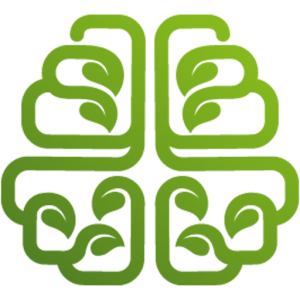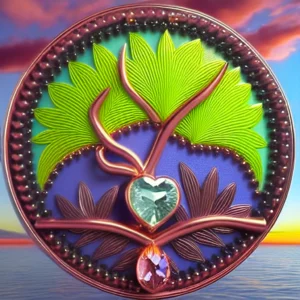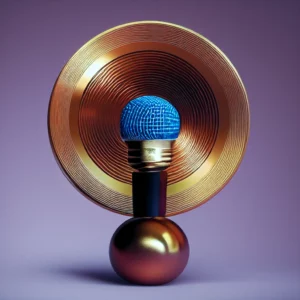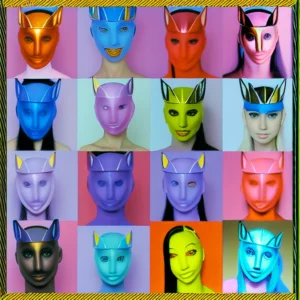 Join Us for CGC Year 8: Fire Infusion
Join Us for CGC Year 8: Fire Infusion
Enrollment is now open for Conscious Growth Club Year 8 – for one week only! Come join us for an intense and engaging year of growth. Our enrollment window closes May 1st at midnight Pacific Time. CGC's theme this year is Fire Infusion. Follow the link to see if you're qualified for membership. There are a LOT of surprises and upgrades to CGC this year.
Exploring Beyond the Cage
I just read an interesting BBC article about why there are significantly more vegan women than men, which is mostly summarized by this statement at the top:
When women hold two incompatible beliefs, they’re more likely to change their behaviour to reconcile them. Men, by comparison, tend to dig themselves in.
The article cites a variety of studies that delve into gender differences and how these connect with dietary decisions. Reading it had an odd effect on me, making my vegan side feel good and my male side feel primitive and stupid.
While I do consider myself an ethical vegan today, this article reminded me that I didn’t go vegan for reasons of compassion or concern for the well-being of animals. While I was aware of factory farming and the cruel ways that animals were treated, that argument didn’t move me. I used to be one of those guys who’d hear those points and then want to eat a burger afterwards. I’m not proud of that, but it’s the truth.
I don’t think it was because I wanted to snub my nose at people trying to tell me what to do. It didn’t feel like I was trying to assert dominance either. I think it had a lot more to do with being out of touch with my feelings. I simply didn’t feel much compassion for animals. Either my heart was silent on the issue, or my brain couldn’t detect what my heart was saying.
I could know that animals were suffering, but this awareness remained on an intellectual level. It didn’t trigger any meaningful caring or compassion within me. I was more likely to think something like, “Sucks to be them, but oh well.” Watching animals in pain was almost like watching a balloon being popped. Animals were just objects, and their fate was of little consequence.
What ultimately got me to transition to veganism was curiosity, but more specifically it was about risk reduction. A prior personal growth experience made me aware of one of my blind spots, and this made me more open-minded about exploring and investigating other potential blind spots.
That prior blind spot was religion. I was raised within the bubble of Catholicism throughout my childhood, and I came to see it very differently when I was 17 years old. I left the Church behind and began exploring other points of view, which was massively transformational. That was one of the most growth-oriented times of my life. It sure took a lot of courage though. I had no help when I began leaning in that direction, so it was a very lonely path with plenty of resistance from other people. I really had to trust my intelligence and reasoning to get through it.
When I looked back on my religious upbringing after I transitioned away from it, I could see more clearly just how blind I was and how full of holes my previous beliefs and perspectives had been. For example, since atheists didn’t worship God, they were doomed to suffer for all eternity. And so when I eventually met an atheist boy, I wasn’t really sure how to relate to him. How exactly do you play sports with someone who’s doomed? Is it safe to be on the same team together? What if he touched me – was being doomed infectious, like cooties?
At first I felt sorry for the guy. He was older than me but obviously in a lot of trouble. I found it odd that he didn’t feel sorry for himself though. I’d assumed that a doomed boy should be more messed up. He seemed totally fine and normal for a boy his age, even nicer than most. That situation created a cognitive disconnect.
When I learned about vegetarianism and veganism some years later, part of me recognized that this could be another of those situations where the insider and outsider perspectives are very different. I realized that if I only explored one side, I’d never really understand the other side, and there was a very real risk that I could be stuck in another thought bubble. That meant that if I didn’t try the opposite for at least a short time, like a month or so, I could potentially be doing the equivalent of remaining Catholic for life without ever understanding what a non-Catholic perspective was like. I shuddered at the thought.
I saw this as an enormous risk, one that I couldn’t ignore. The risk that I might inadvertently do the equivalent of spending my whole life Catholic really bothered me. What if the diet I was raised to eat was another one of those areas where I’d be wrong and deluded all along? I had to find out if that was true or not.
Once I adopted this framing, it was pretty much inevitable that I’d eventually do some personal exploration in this direction. It was just a matter of figuring out when and how to fit this experiment into my life. I started with a 30-day vegetarian trial between semesters in college in 1993. And then 3.5 years later, I did a 30-day vegan trial in January 1997. Both of those experiments became permanent lifestyle changes.
Again, compassion wasn’t one of my reasons for doing these experiments. I was much more concerned about the risk of getting stuck for life in a potentially erroneous thought bubble. The huge differences between the inside and outside perspectives of Catholicism were still fresh in my mind, even though I didn’t begin these diet experiments till about 5 years after the transition from religion.
My memories of the prior transition were frequently refreshed – whenever I’d pass a church, see a church on TV, or interact with family. Even seeing Ned Flanders or Reverend Lovejoy on The Simpsons was a reminder of the trap I’d successfully escaped – and a powerful warning that I could still be trapped inside another bubble.
So for me this exploration wasn’t really about getting into vegetarianism and veganism. It was about exploring outside of the reality bubble of animal products. I absolutely needed to know what was outside of that bubble. Not discovering the truth for myself was too great a risk.
I had learned the hard lesson that I couldn’t trust the people around me. When I was surrounded by religious people, we were all inside the same thought bubble together. It was only when I spotted a window to an outside world – in the form of meeting a nice doomed boy – that I began to wonder if I might be missing something.
So truth poked my bubble. Don’t you just hate it when that happens?
I wasn’t at all sure what the exterior perspective would be like though. When I did my 30-day vegetarian trial, it really was just a trial. I had no expectation that it would stick. I assumed it was just going to be a temporary experiment and that I’d be back to eating animals on Day 31. My intention was to explore and experience vegetarianism, so I would finally know what it was like. But I didn’t actually want it to stick. I wanted to open the door to answer truth’s knock, hear the sales pitch, and then say, “No, thank you,” and close the door like I was dismissing a couple of Mormons on a mission. I wanted to reassure myself that it was fine to return to my old diet since I had checked to see what life was like outside that bubble. I wanted to make sure that my dietary thought bubble was okay and that I didn’t have to abandon it.
Of course my assumption was wrong. It took perhaps six months to realize that I wasn’t going to return to eating animals. With the 30-day vegan trial, it didn’t take as long. If I recall correctly, I felt that I’d continue with veganism even before the initial 30-days were up. The first week of seeing all that dairy clog purging itself from my body helped to convince me that I should never put that gunk back inside me again.
These days I care a lot about animals. I feel for them in ways I never felt when I ate their flesh and eggs and drank the milk intended for their babies. My relationship with animals used to be one of entitlement and indifference, and I didn’t see anything wrong with that. I didn’t feel what I feel today. These feelings simply didn’t exist in the old bubble.
Going vegetarian and then vegan really helped to clean and revitalize my heart-brain connection, but I had no idea that I was missing anything when I started exploring in this direction. I gained a sense of empathy and compassion that I couldn’t remember feeling previously, except maybe in some vague memories from when I was very young.
Reading that article about the stubbornness of men hit home with me because it reminded me of what I was like in the old bubble. I feel so grateful that somehow I found an intellectual backdoor that enabled me to escape it. While I went vegan as an experiment to address a potential risk, I remain vegan for a much stronger set of reasons. I’m no longer indifferent and emotionally out of touch like I used to be. My ability to treat animals as products was an artifact of a thought bubble I left behind a long time ago. While I was in that bubble, I couldn’t connect with their beauty.
I spent many years of my life inside a thought bubble of animal neglect and abuse. While it’s not one I’ve visited for many years, I remember well enough what it was like on the inside. From the inside it doesn’t look like abuse. It just seems normal. I can recall plenty of meals with friends back in the day where animals were part of the experience, and it didn’t seem strange at the time.
I can also see why many men aren’t persuaded to explore veganism by the compassion argument. I understand how some pro-vegan arguments could make some men want to do the opposite. I don’t really think this attitude has so much to do with asserting dominance over animals though. I think it’s really a form of clinginess to the familiar thought bubble. It’s a retreat from a perceived threat. The response is more fear-based than many men would care to admit. It’s a retreat from a potential truth.
What convinced me to explore beyond the bubble was that I recognized a potentially greater threat – that I could be stuck inside a very limiting subset of reality that could trap me for life if I was too passive. The only way to know if I was indeed trapped was to explore beyond the cage. I had to know what was outside. And when I saw that life was better outside, I saw the cage for the trap it was, and I never wanted to return to it again, just as I never wanted to return to my old religious cage again.
Veganism isn’t a restrictive form of eating or lifestyle. It’s entirely the opposite of that. It’s immensely freeing to live outside of the old cage. This path helped me develop senses that I didn’t know I could possess. It invited me on a tremendous journey of upgrading my relationships with animals, with people, with life, and with reality.
The experience of escaping the old bubble was similar to realizing that I never had to go to confession again – no more sharing my sins with a creepy collared guy. My old relationship with animals was creepy as hell. But like the creepiness of confession, I couldn’t see or acknowledge that creepiness from within the bubble. Such is the nature of a thought bubble – you can only see the full truth of it when you experience the inside and the outside for enough time, and then compare notes.
This makes me wonder what kind of framing could have sped me along and helped me progress faster when I was younger. If the compassion argument would have fallen on deaf ears, what argument might have influenced me to explore outside my bubble sooner?
I think there is a better argument that would have worked, and it’s largely what I shared here. You could call it the Bubble Boy frame.
I was developing a healthy respect for people who explored beyond the bubbles that I grew up with. Once I had popped my first major bubble, I gained a much weightier understanding of the risks of not even seeing a bubble in which I could potentially be trapped for life. Considering that I could still be going to mass every Sunday – and confession too – if I hadn’t seen the bubble for what it was is creepy as hell.
That’s still a convincing argument for me today. This perspective has nudged me to explore outside of other bubbles that I was raised with – the bubble of employment, the bubble of monogamy, and so on.
The desire to discover new truths is compelling, but even more compelling is the desire to avoid spending your whole life in a cage and never even seeing the cage.
So I think I’d have found the perspectives of the cage, the bubble, and the trap a lot more compelling than any compassion-based arguments. Those lenses got me moving even when my heart-brain connection was offline. I didn’t want to spend my life as a bubble boy or cage boy.
These days those perspectives aren’t as compelling as they used to be. They still feel relevant and meaningful sometimes, but I now find it simpler to trust my default heart-brain intelligence instead of needing to lean on the bubble boy crutch for guidance. I am super grateful that I came upon that crutch when I did though. It was an empowering perspective – not the only tool in the toolbox but certainly an effective one for escaping nearly invisible cages.




